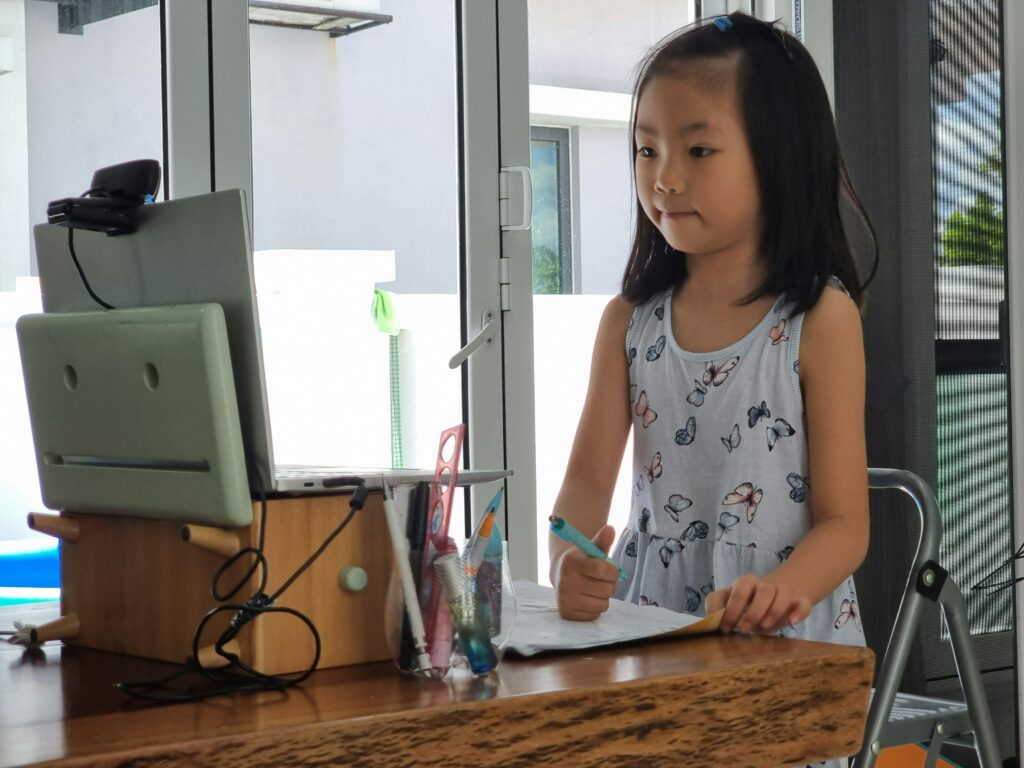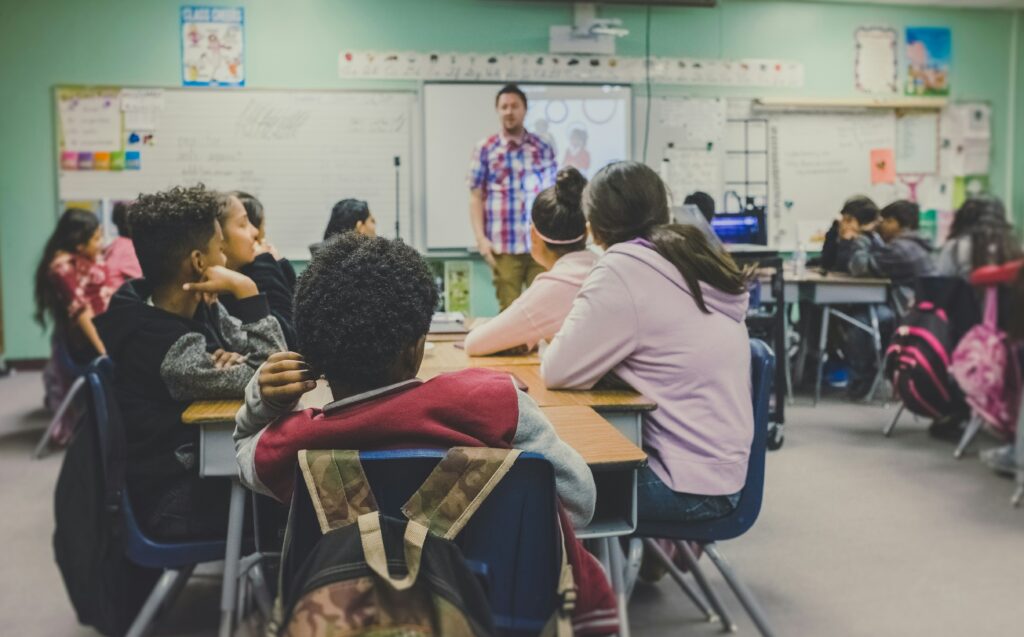
My name is Atalaya Anzer (she/her), and I am excited to be part of EDCI-339 this semester. I am currently in my 4th and last year at UVic, and I will be graduating with a BA in psychology and a minor in education. I plan to work in an educational setting as a teacher or counsellor in the near future, so I am excited to explore the principles of open and distributed education. – Check out the welcome page for more information about myself.
Distributed Learning:
Distributed education is a dynamic and flexible learning model that supports teaching through multiple technological formats (Hotchins, 2025). It differs from traditional learning because it does not require the students or teachers to be physically present in a classroom. For example, Learning Management Systems (LMS) like Brightspace allow students to access and engage with course material online, creating a central platform for students and teachers.

Distributed learning in institutions has modernized education and promoted learning that is accessible, flexible, and inclusive. It removes barriers by allowing learners who have challenging schedules or geographical restrictions to have equal access to quality education (Hotchins, 2025). For example, a university student who works full time or an adolescent who lives in a rural area can engage with the learning material online at their convenience. Distributed learning also accommodates diverse learning styles by offering resources and class material that learners can revisit at their own pace, enabling them to work in a way to suit their own preferences (Iniesto & Bossu, 2023).
Open Education:
Open education is similar to distributed education as it removes restrictions such as time constraints and location. However, it also has an additional aspect of removing costs by allowing individuals to have access to online information and resources freely (Hotchin, 2025). This involves making educational materials, like textbooks, journals, and online courses, universally accessible without cost.

Open education significantly contributes to creating a more inclusive and equitable learning environment. By removing the financial limitations placed on education, it ensures individuals from all socioeconomic backgrounds are able to access high-quality learning materials (Kumar, 2019). For example, a student who can not afford a required textbook or university class can access the same information online without additional cost through open educational resources (OERs). Open education utilizes multiple platforms such as YouTube, Khan Academy, and Duolingo, where individuals can further improve their knowledge, studying skills, or even learn a new language on their own. This can help families who can’t afford tutors to ensure their children have access to the resources they need to succeed academically. According to research from the United Nations, approximately 265 million children worldwide are lacking basic elementary education (Kumar, 2019). Open education helps to bridge the gap of economic disparity in education by helping students access free learning resources.

Modes of Learning:
The 4 main modes of learning are face-to-face, online, blended, and hybrid. Face-to-face education involves traditional classroom learning, where students and teachers interact in person. This form of learning promotes engagement through discussion and immediate feedback. Online learning can be synchronous, involving real-time interactions through platforms like Zoom, or asynchronous, self-paced learning using pre-recorded videos with no meeting times. Synchronous learning promotes real-time engagement between students and teachers, while asynchronous learning offers flexibility for students to learn at their own pace (Hrastinski, 2008). However, both forms of online learning can be detrimental to student engagement if they lack direct interaction or self-regulation to learn on their own time.
Blended learning is a mix of face-to-face and online learning with set meeting times in person and online. Hybrid learning is a form of education similar to blended learning, but students have the autonomy in choosing when they would like to attend in-person or online sessions (Hotchins, 2025). Both learning modes offer a balance between structured in-person sessions and flexible online learning. Once again, it is important to note that self-motivation is important in any form of online learning, so students must be organized to engage with and learn from the material.
I personally prefer blended learning because it provides a balanced approach between the structure of face-to-face interactions and the flexibility of online learning. I appreciate the online aspect because I have a busy schedule outside of school, enabling me to learn and complete assignments at my own time. On the other hand, I also enjoy face-to-face learning because it encourages me to build team work skills, collaborate with others, and ask questions in person,. Although I haven’t taken a blended class yet, I believe the combination of in-person support and online flexibility would work well for my learning style.

Digital Literacy:
Digital literacy is the ability to effectively utilize technology to share information and acquire knowledge. Its an critical skill for distributed learning and open education that facilitates the use of online material and collaboration tools (Hotchtins, 2025). Teachers must develop digital literacy skills such as information literacy to decipher fake and real news, technical proficiency to utilize learning management systems, and ethical usage to maintain digital privacy, to name a few (Hotchins, 2025). All aspects of online learning, from meetings to class websites and the information shared, rely on these skills. In my own education journey, digital literacy has been a central aspect. For example, I rely on my digital literacy skills to engage in online discussions, research, cite information, and submit assignments.
Digital Identity:
I manage my digital identity by separating personal and professional identities and being intentional about what content I post. For my personal identity online, I use private social media accounts and only let people I know follow me as an added safety precaution. I use social media as a way to share photos I have taken and communicate with friends and family all over the world, making it an important aspect of my social life and well-being. For my professional identity, I have a LinkedIn account where I highlight my educational achievements and experiences. I utilize it to connect with individuals in the same field to gain advice and exchange ideas.
References
Iniesto, F., & Bossu, C. (2023). Equity, diversity, and inclusion in open education: A systematic literature review. Distance Education, 44(4), 694–711. https://doi.org/10.1080/01587919.2023.2267472
Kumar, S. Influence of open educational resources on educational practices in the Global South. Nat Hum Behav 3, 540–541 (2019). https://doi.org/10.1038/s41562-019-0624-4
Hotchins, J. (2025, January). Module One: Introduction to distributed and open learning [PowerPoint slides]. Department of Curriculum and Instruction, University of Victoria.
Hrastinski, S. (2008). Asynchronous and synchronous e-learning. Educause Quarterly, 31(3), 51-55. https://www.researchgate.net/publication/238767486_Asynchronous_and_synchronous_e-learning
Hey Atalaya,
I really liked your discussion on distributed and open education. Your example about students in rural areas or those with full-time jobs was a great point. It is a good reminder of how these models can remove barriers that traditional education cannot. Do you think certain areas of open education are comparable to traditional learning? For example, while free resources are useful, do you think they always match the quality of paid textbooks or university courses?
I also liked your approach to digital identity. Keeping personal and professional accounts separate seems like a smart way to balance privacy and networking. As I am also interested in psychology and counselling, do you find LinkedIn to be useful for making connections?
Looking forward to your response 🙂
-Matthew
Hello Atalaya,
Nice to meet you! Thanks for sharing thoughts on open learning and digital identity. I agree with you that we all reply on digital literacy in terms of engagement. Your approach to digital identity is also unique. I see you are keeping accounts private and limiting followers to people you know. This shows a strong awareness of digital safety. It also highlights the importance of social media in maintaining personal connections and enhancing well-being, which is a valuable perspective in today’s digital age. I really appreciate your efforts.
Percy W